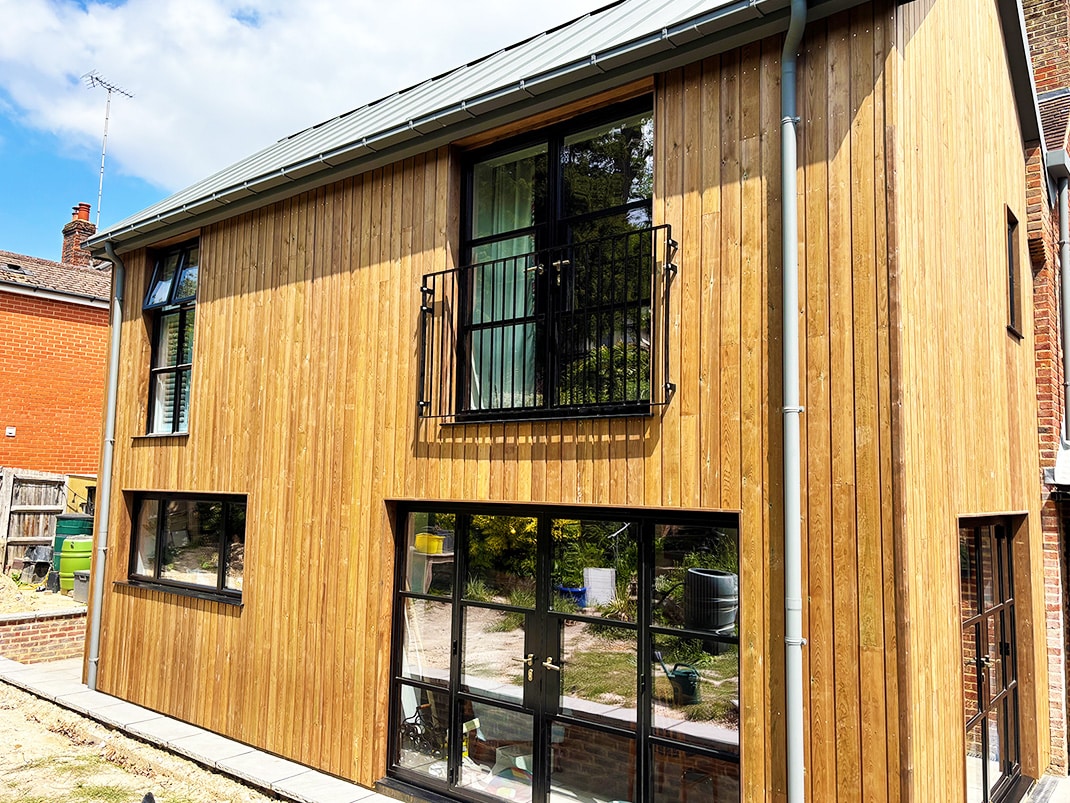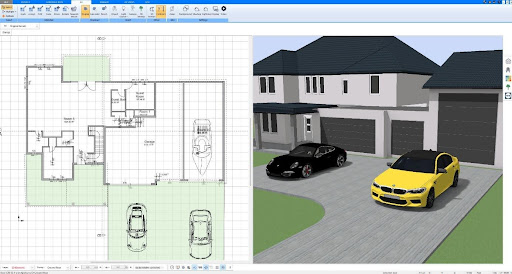In the fast-paced and often hazardous environment of construction sites, visibility and identity are two of the most overlooked yet essential aspects of workplace safety and professionalism. Workers operate heavy machinery, navigate moving vehicles, and handle materials in conditions where even a momentary lapse in visibility can result in serious accidents.
At the same time, construction companies are increasingly aware of the role branding plays in client perception, employee morale, and compliance with safety standards. The intersection of these priorities is where high visibility clothing and custom screen printing converge to offer both protection and distinction.
This article explores why investing in these customized garments is a smart decision for any construction crew. It examines the functional importance of safety apparel, the trade-offs between customization and compliance, the challenges in balancing durability and comfort, and the broader impacts of these choices on safety culture, worker morale, and company image.
Table of Contents
The Role of Visibility in Construction Safety
Construction sites are inherently risky. Workers often operate near heavy equipment, vehicles, and other moving hazards that make it crucial for everyone to be seen at all times. Hi-vis clothing is designed to make workers stand out in complex visual environments through fluorescent fabrics and reflective materials that enhance visibility during both day and night. This isn’t just about following regulations—it’s about reducing accidents that stem from poor visibility.
According to the U.S. Bureau of Labor Statistics, a significant percentage of workplace injuries in construction are related to visibility failures, particularly in low-light conditions. For instance, a worker operating near a roadway or on a nighttime project is far more likely to be struck by a vehicle if not wearing appropriate high visibility workwear. This type of apparel provides a visual cue that helps others identify workers’ positions instantly, even in peripheral vision.
Yet, visibility alone is not enough. As construction projects evolve, so do branding needs, team coordination requirements, and company culture initiatives. Here is where the combination of personalized safety apparel and branding techniques becomes essential—not just for safety, but also for identity and trust.
Why Branding Matters on the Jobsite
Modern construction is no longer just about building structures—it’s about building reputations. The competitive nature of the industry demands that companies project professionalism and reliability from the first point of contact to the completion of a project. Uniformity plays a crucial role in creating that image.
When employees wear branded hi-vis clothing, it communicates several things at once: unity, professionalism, and accountability. Clients and site visitors perceive an organized and safety-conscious workforce. Employees, in turn, feel a stronger connection to their company and to one another. This unity can improve morale and reduce turnover, which is a growing challenge in the labor-intensive construction sector.
Branding through personalized screen printing is a cost-effective way to achieve this. Company logos, employee names, or department identifiers can be printed on vests, jackets, or shirts, reinforcing brand recognition while keeping workers compliant with safety regulations. The result is gear that not only protects but also promotes the business.
However, balancing safety and brand design introduces several trade-offs that companies must consider carefully.
Balancing Functionality, Aesthetics, and Compliance
When customizing safety apparel, one must navigate the fine line between aesthetics and functionality. High visibility workwear must comply with ANSI (American National Standards Institute) or ISO (International Organization for Standardization) guidelines to be legally acceptable on job sites. These standards specify the amount of fluorescent material and reflective tape placement required for garments to qualify as compliant safety wear.
Adding logos or designs through personalized screen printing can sometimes interfere with these reflective zones if not done correctly. Overprinting on reflective strips, for example, can reduce visibility and render the clothing non-compliant. Companies therefore face a trade-off: how much customization can they incorporate without compromising safety or compliance?
The most responsible approach involves collaboration with safety apparel specialists who understand these standards. They ensure that design placements complement rather than obstruct reflective elements. A well-executed print enhances brand presence without diminishing visibility. Achieving this balance requires technical expertise and an awareness of safety regulations, making vendor selection a critical decision.
Durability vs. Comfort: The Ongoing Dilemma
Durability is another major consideration when choosing safety apparel. Construction work is physically demanding and often performed in rough environments. Clothing endures friction, weather exposure, and frequent washing—all of which can degrade materials and reduce reflectivity over time.
Reflective safety wear must therefore maintain its performance despite these challenges. High-quality materials like polyester blends and durable stitching help extend the garment’s lifespan, but these can sometimes come at the cost of comfort. Workers may find heavy or non-breathable fabrics restrictive, especially in hot or humid conditions.
The challenge lies in finding materials that strike a balance between toughness and comfort. Lightweight, moisture-wicking fabrics have emerged as a solution, providing breathability while retaining reflective strength. Yet these advanced fabrics can be more expensive, which can make large-scale outfitting a costly investment—especially for smaller construction firms with limited budgets.
Similarly, the method of applying branding affects durability. Custom shirt printing methods vary in longevity. While screen printing provides vivid and long-lasting designs, cheaper alternatives like heat transfers may peel or fade after repeated washing. The trade-off here involves up-front cost versus long-term performance. Construction companies must assess whether lower-cost apparel provides enough wear cycles to justify the savings or whether investing in higher-quality, longer-lasting gear reduces replacement costs over time.
The Human Factor: Comfort, Pride, and Identity
Beyond compliance and branding, there is an often-overlooked psychological element: how workers feel in their gear. Employees who wear comfortable, well-designed, branded uniforms tend to take greater pride in their work. When workers feel valued and visible, they become more attentive to safety and teamwork.
Construction companies that provide premium hi-vis clothing send a clear message that they care about their employees’ well-being. This can directly influence workplace culture and safety performance. Conversely, poorly designed or uncomfortable apparel can discourage workers from wearing it consistently, undermining both safety and compliance goals.
An added benefit is cohesion. When everyone on a site wears coordinated reflective safety wear with branded identifiers, it becomes easier for supervisors and crew members to recognize their team. This not only supports workflow efficiency but also fosters a sense of belonging—especially in large projects where multiple contractors operate simultaneously.
Environmental and Ethical Considerations
Today’s construction clients are more conscious of sustainability and corporate responsibility than ever before. This awareness extends to the materials used in safety apparel. Manufacturers are now introducing eco-friendly options such as recycled polyester and water-based inks in personalized screen printing processes.
While sustainable materials can slightly increase production costs, they also enhance a company’s environmental reputation. Construction firms pursuing LEED certification or working on green building projects can align their sustainability goals with their workforce attire. Adopting environmentally responsible apparel also appeals to younger workers who value ethical business practices.
That said, sustainability introduces another trade-off: durability versus eco-friendliness. Some eco-friendly fabrics may not yet match the longevity of traditional synthetics, leading to faster wear and tear. To make an informed decision, companies must evaluate whether their operational priorities lean more toward long-term durability or environmental responsibility. A balanced procurement strategy might involve offering sustainable options for light-duty roles while reserving heavy-duty, long-lasting gear for intensive work.
Cost Considerations and Return on Investment
At first glance, outfitting an entire crew in branded safety gear can seem like a significant expense. Between fabric quality, reflective tape standards, and printing costs, the investment can add up quickly—especially for larger teams. However, the long-term returns often outweigh the initial outlay.
Branded hi-vis workwear offers multiple cost-saving benefits over time. First, higher visibility reduces accidents and associated downtime or insurance claims. Second, durable clothing reduces replacement frequency, minimizing recurring expenses. Third, branded apparel doubles as mobile advertising: every worker on-site becomes a walking billboard for the company.
Moreover, companies with well-presented crews often enjoy better client perception. This can lead to repeat business, higher bid success rates, and stronger brand loyalty. From a human resources standpoint, employees who feel that their employer invests in quality gear are more likely to exhibit job satisfaction and retention—reducing recruitment and training costs.
Still, there’s no denying the upfront burden, especially for smaller contractors. Bulk purchasing, supplier partnerships, and phased rollouts can help spread costs. Some vendors also offer financing or trade-in programs for old gear, making it easier for companies to upgrade without major financial strain.
Managing Customization Challenges
While personalized workwear offers clear benefits, it also comes with logistical challenges. Managing multiple designs, ensuring consistent branding across sites, and reordering specific sizes or print layouts can quickly become complex—especially when different teams require variations for weather or project type.
To overcome these issues, many firms now maintain digital apparel catalogs or online portals where managers can reorder standardized designs easily. These platforms reduce errors, maintain consistency, and simplify inventory control. Furthermore, advances in digital design allow companies to preview logo placements, color contrasts, and reflective zones before production begins, minimizing compliance risks.
However, a critical factor remains: choosing the right vendor. Not all printers specialize in safety-grade apparel. Construction firms should partner with suppliers who understand ANSI/ISEA guidelines and can produce certified reflective safety wear without compromising the garment’s protective properties.
The Broader Impact: Safety Culture and Public Perception
Ultimately, the decision to invest in branded hi-vis apparel extends beyond logistics or aesthetics—it’s a reflection of a company’s values. A workforce that wears consistent, visible, and high-quality gear signals a deep-rooted commitment to safety and professionalism.
Clients notice when a construction crew arrives on-site in clean, coordinated, reflective uniforms. It communicates organization and care, reinforcing trust. Within the workforce, it fosters discipline and pride, both of which are foundational to an effective safety culture. Employees who view their apparel as part of their professional identity are more likely to adhere to safety protocols and look out for one another on the job.
The public perception aspect should not be underestimated either. Construction often takes place in public or high-traffic areas, where pedestrians and motorists form opinions about the companies they see working. Branded, visible, and compliant workwear projects reliability and competence—qualities that strengthen a company’s reputation long after a project ends.
Making Informed Decisions
When deciding on a uniform strategy, construction managers must weigh multiple factors—safety compliance, comfort, branding, cost, durability, and sustainability. The right choice depends on the specific working conditions, project duration, and company values.
A good starting point is to evaluate how well current gear meets visibility and comfort standards. Next, assess how branding could enhance cohesion and client perception. Partnering with suppliers that understand both safety and branding ensures compliance and consistency. It’s also wise to consider the long-term return on investment, rather than focusing solely on upfront cost.
Ultimately, investing in quality reflective safety wear with durable branding is not a luxury—it’s a long-term commitment to safety, professionalism, and identity.
Wrapping Up
Construction sites demand both visibility and unity. By investing in well-designed, compliant, and branded hi-vis clothing through reliable personalized screen printing, companies create safer workplaces and stronger brands simultaneously. The trade-offs—cost versus quality, comfort versus durability, customization versus compliance—are all part of a decision-making process that defines a company’s culture and reputation.
When done thoughtfully, this investment pays off in fewer accidents, higher morale, and better business outcomes. It transforms everyday apparel into an asset that reflects both the light of safety and the pride of craftsmanship—values that every construction company should strive to uphold.





